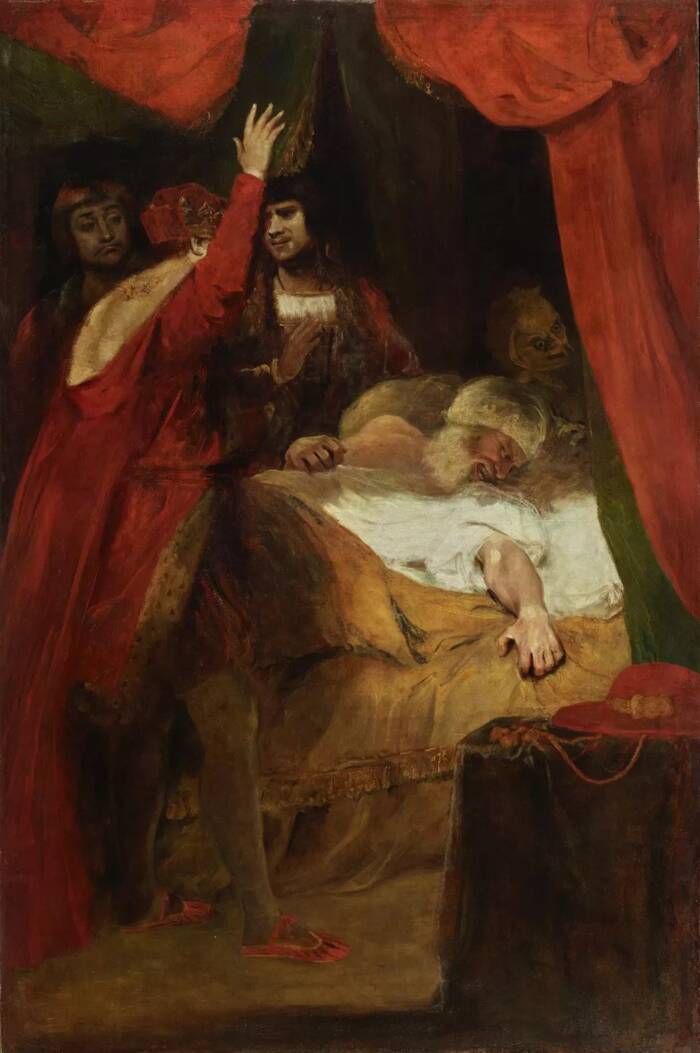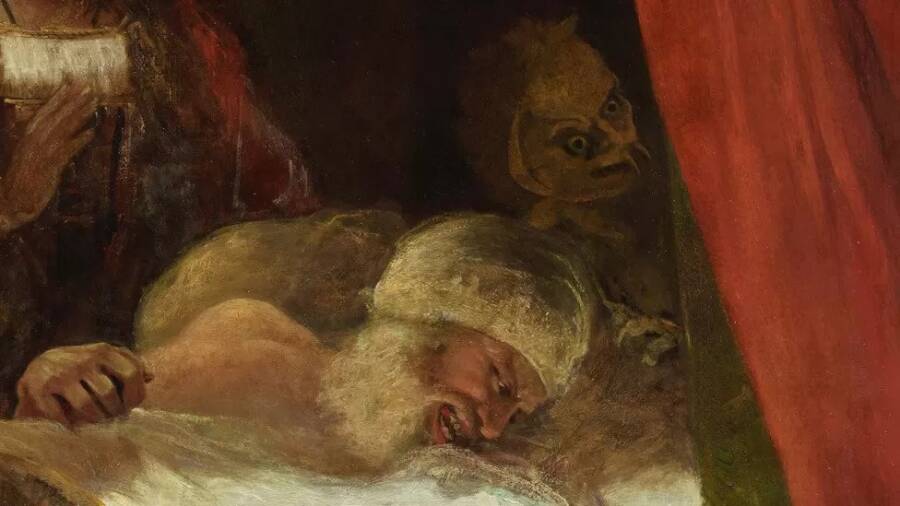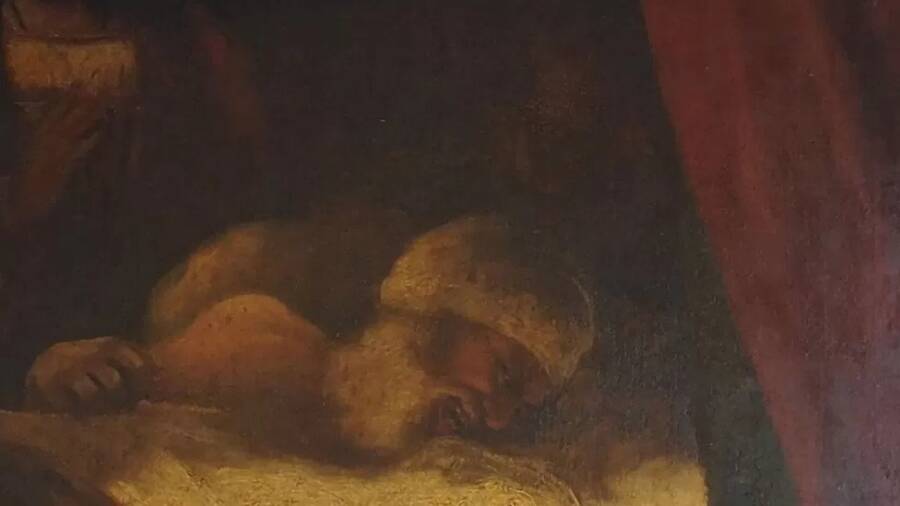The Death of Cardinal Beaufort was painted by Sir Joshua Reynolds in 1789 and included a controversial demonic figure — but layers of paint and varnish added after Reynolds' death eventually obscured it.

National TrustThe demon was highly controversial at the time, with one critic sneering that it was “too ludicrous and puerile to escape censure.”
When Sir Joshua Reynolds debuted his painting The Death Of Cardinal Beaufort in 1789, critics were shocked that he’d included a “fiend” lurking in the background. Over the years, the demonic figure slowly disappeared beneath layers of paint and varnish. But now Reynolds’ artwork — fiend and all — has been restored.
“This is a large painting and we wanted to ensure that it still represented what Reynolds originally painted, which included allowing the fiend to be uncovered,” Becca Hellen, the National Trust’s Senior National Conservator for paintings, said in a press release about Reynolds’ hidden demon.
The Death Of Cardinal Beaufort is based on a scene from Shakespeare’s Henry VI, Part II. In the play, the titular king laments at the bedside of the cardinal, his great uncle, and appeals to God to let him have a peaceful death by crying: “O! Beat away the busy meddling fiend that lays siege unto this wretch’s soul.”
Reynolds apparently took a literal interpretation of the scene as he painted The Death Of Cardinal Beaufort. But most critics were appalled when the artwork debuted at London’s Shakespeare Gallery in 1789.
One said that the demon should only have been included if it was an actual character in Shakespeare’s play. Another went even further, writing a review in the Times that May which declared: “The Imp at the Cardinal’s bolster cannot spoil the Picture, but it does no credit to the judgement of the Painter. We rather apprehend that some Fiend had been laying siege to Sir Joshua’s taste, when he determined to literalise the idea.”
The critic continued: “The license of Poetry is very different from that of Painting; but the present subject itself is complete in itself, and wants not the aid of machinery from Heaven or Hell. In this enlightened period astonishment and pity wait upon it.”
As John Chu, Senior National Curator for Pictures and Sculpture at the National Trust, explained: “[Reynolds’ painting] didn’t fit in with some of the artistic rules of the times to have a poetic figure of speech represented so literally in this monstrous figure… While it was considered acceptable in literature to introduce the idea of a demon as something in the mind of a person, to include it visually in a painting gave it too physical a form.”

National TrustA close up of the demonic figure in Reynolds’ painting, which shocked many critics at the time.
That said, Reynolds’ painting wasn’t universally panned.
“[W]hy should not painting as well as poetry express itself in a metaphor, or in indistinct allegory?” one critic asked in 1791.
He went on: “A truly great modern painter lately endeavoured to enlarge the sphere of pictorial language, by putting a demon behind the pillow of a wicked man on his death bed. Which unfortunately for the scientific part of painting, the cold criticism of the present day has depreciated.”
But most appeared to agree that the demon was an unneeded flourish. And as time passed, the “fiend” began to disappear from the painting entirely. As the press release notes, the first print of Reynolds’ painting included the demon; the second, made in 1792 after the artist’s death, did not.

National TrustThe controversial demon in Reynolds’ painting was quickly hidden from sight.
“Indeed,” the press release explains, “in the original painting, the character of the fiend was so degraded that it had the appearance of having been removed from there too.”
Though Reynolds had resisted attempts to alter the painting during his life, experts from the National Trust found that it had been “restored” over the years by several different people who had added at least six layers of varnish.
“It perhaps isn’t a surprise that [the demon] had receded so far into the shadows of the picture,” Chu said. “It appears it was misunderstood by early conservators. Some decades after the painting was done, that area seems to have deteriorated into small islands of paint and become less clear due to the constituent parts of the paint. Degradation of successive varnish layers over the years made it even less visible.”
Now, however, Sir Joshua Reynolds’ demonic figure has been revived. The controversial painting is currently on display at Petworth House in West Sussex, with Reynolds’ fiend back in its rightful place at the cardinal’s bedside.
After reading about the lost demon discovered in Sir Joshua Reynolds’ painting The Death of Cardinal Beaufort, look through the stories of these paintings that are allegedly haunted. Or, see how this thrift store painting bought for four dollars turned out to be an N.C. Wyeth painting worth as much as $250,000.





